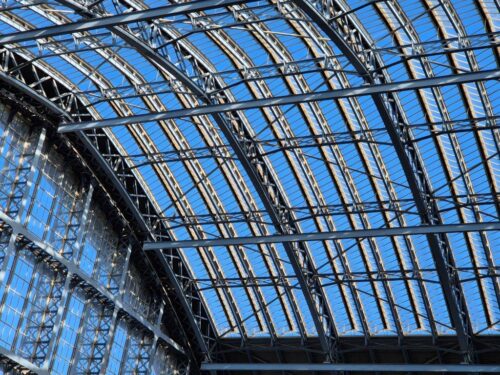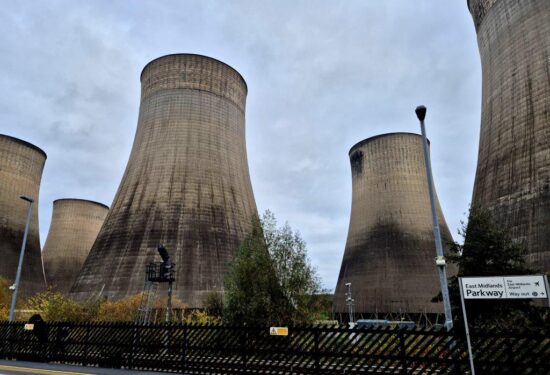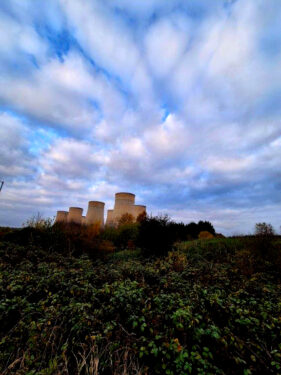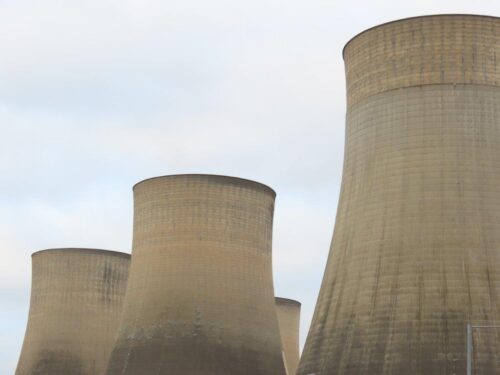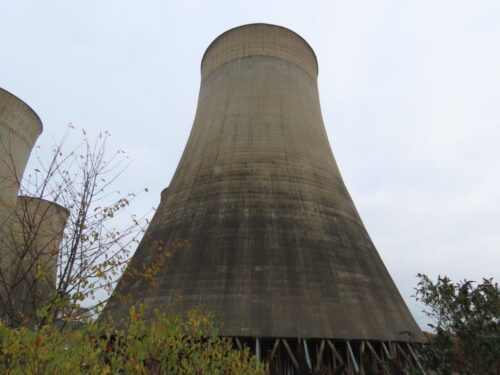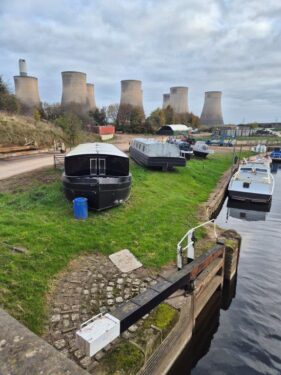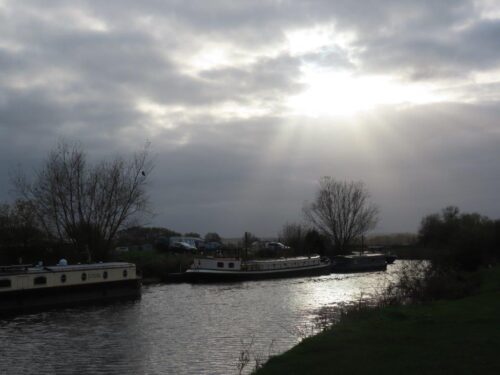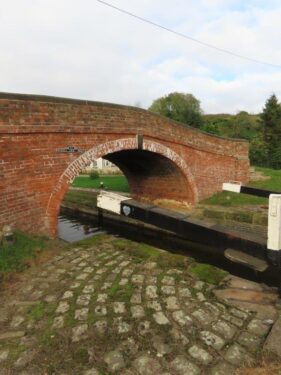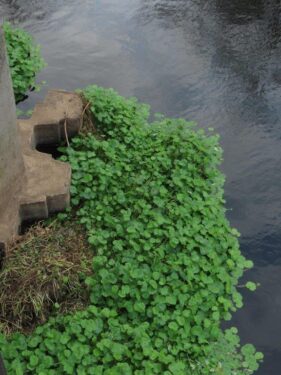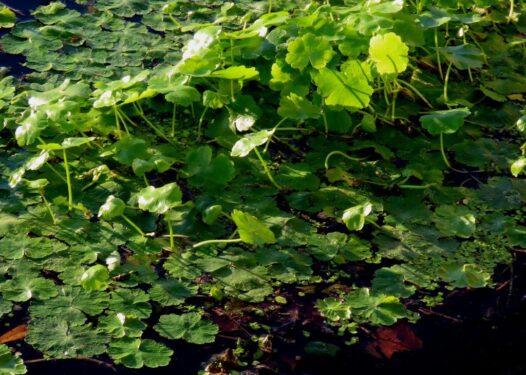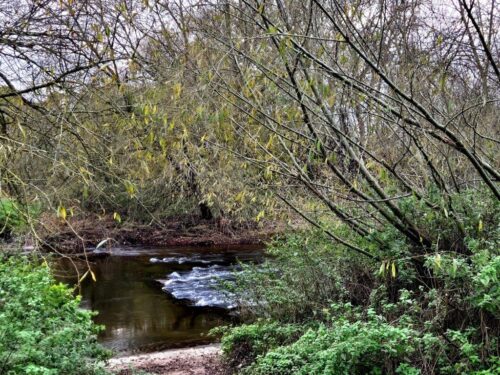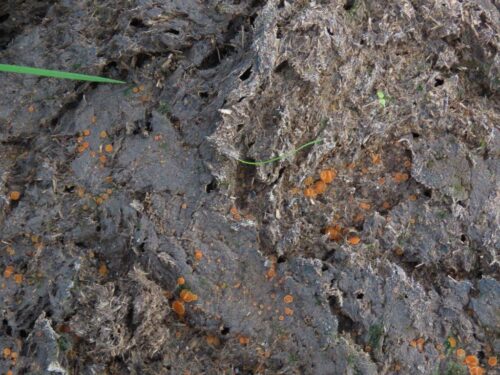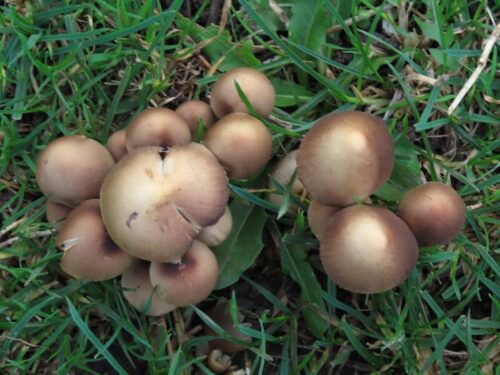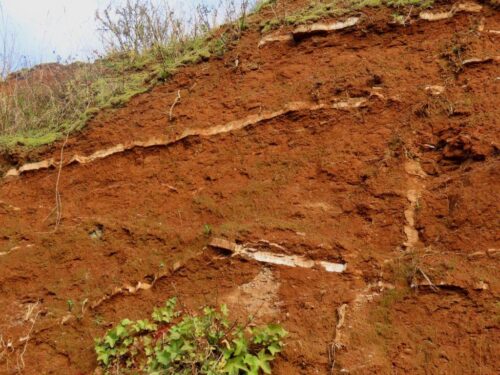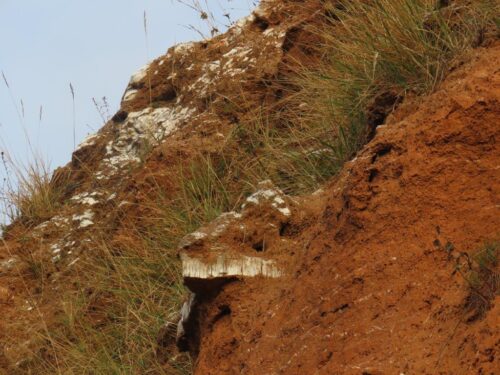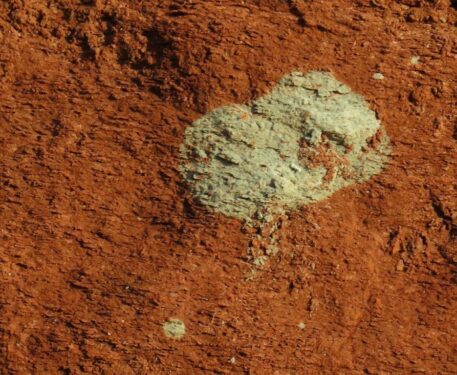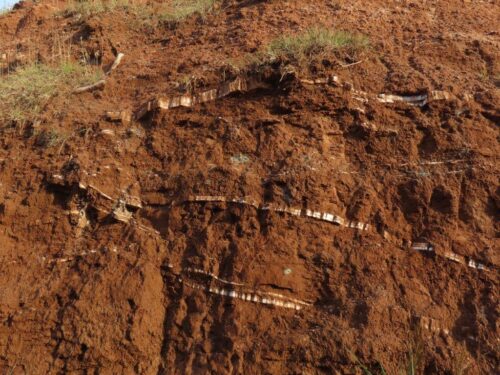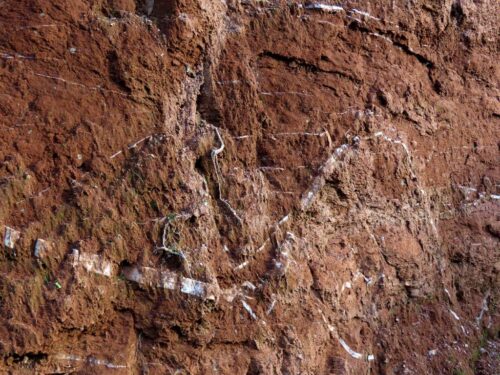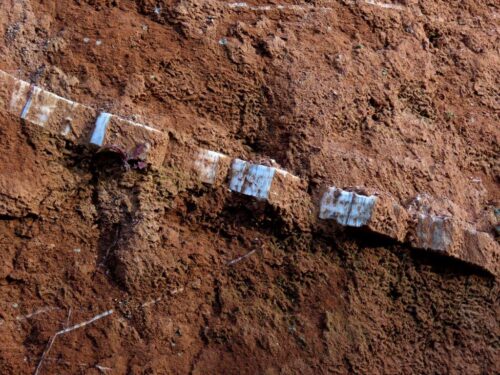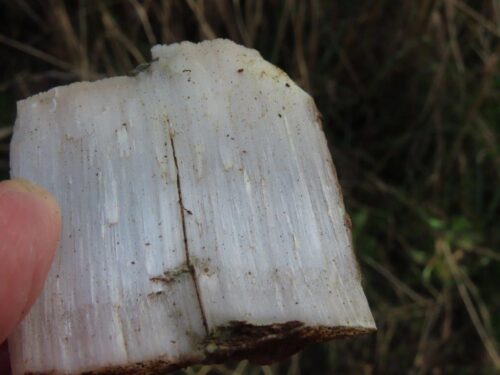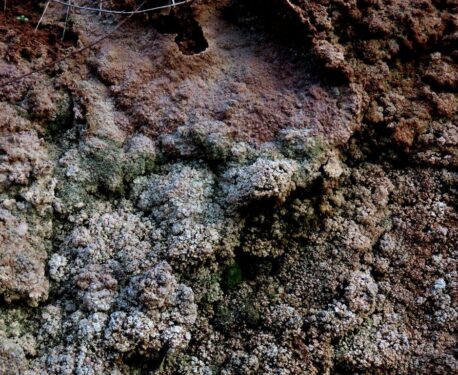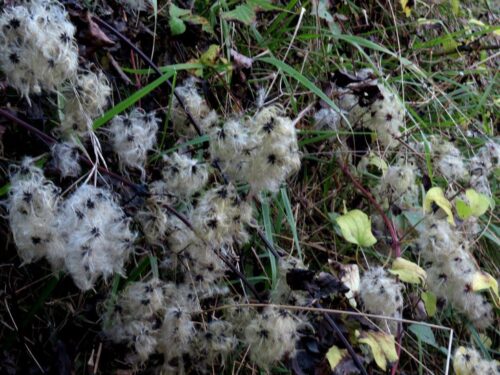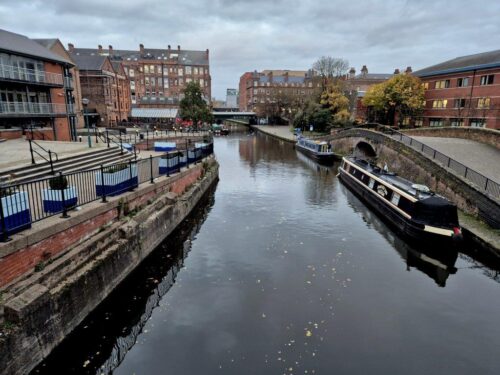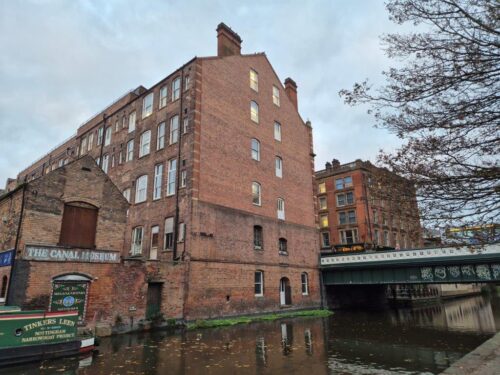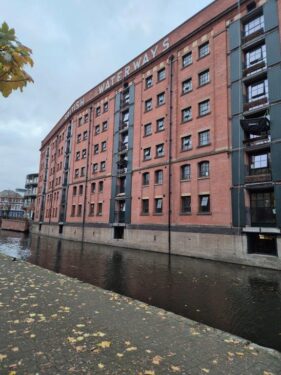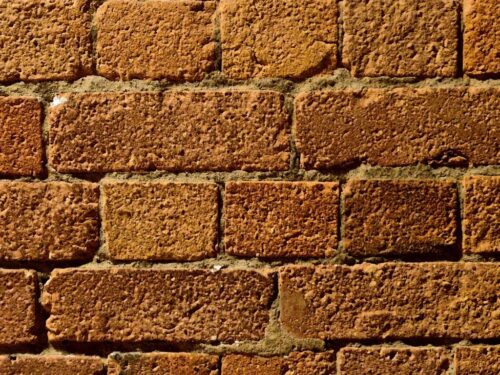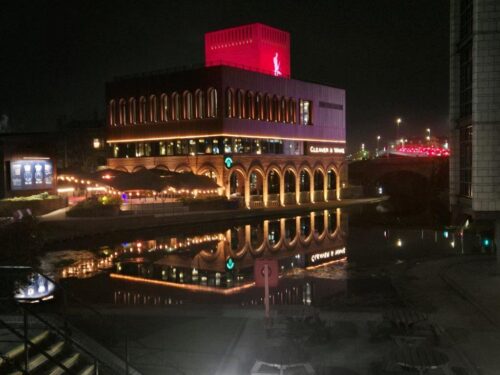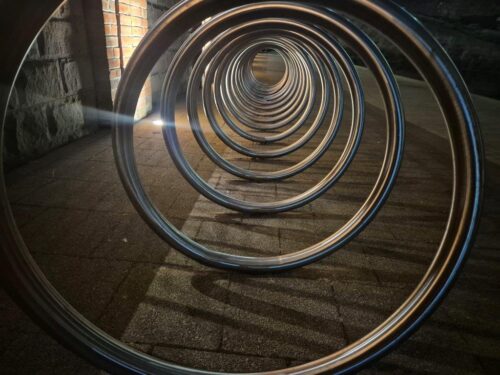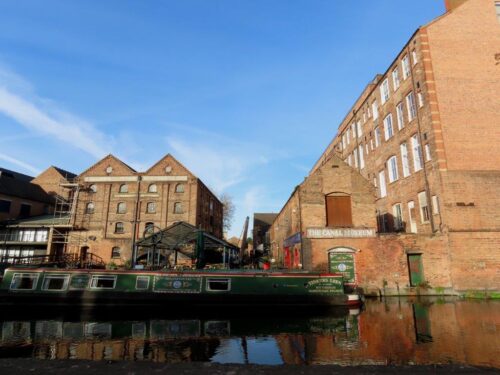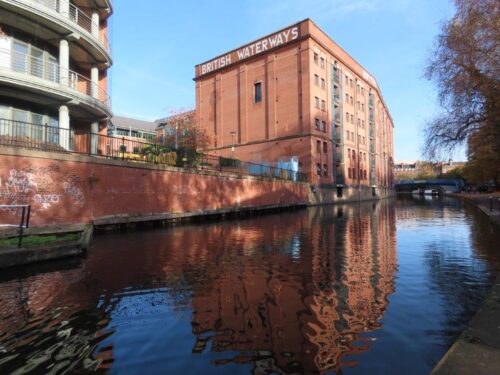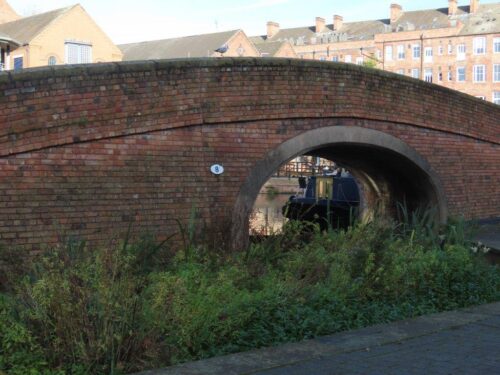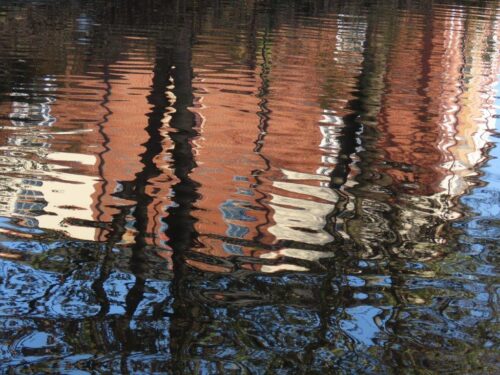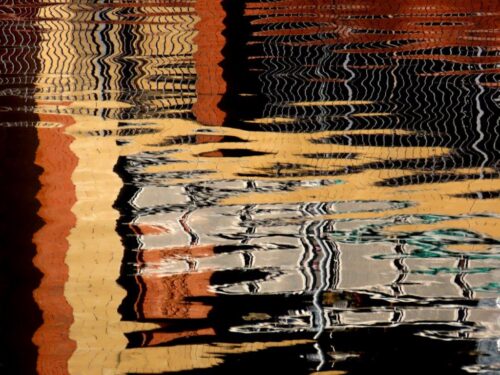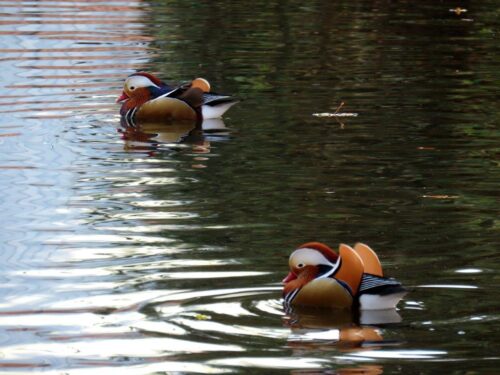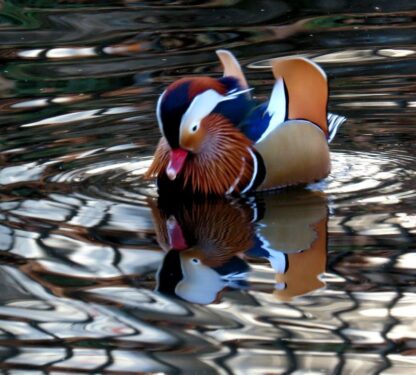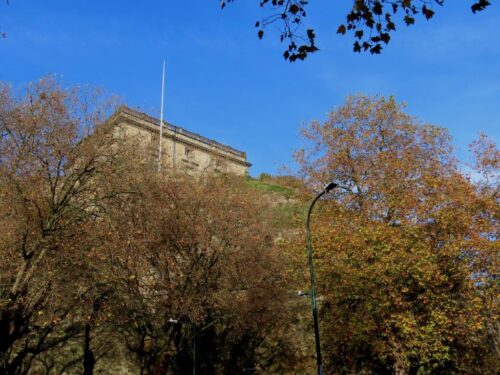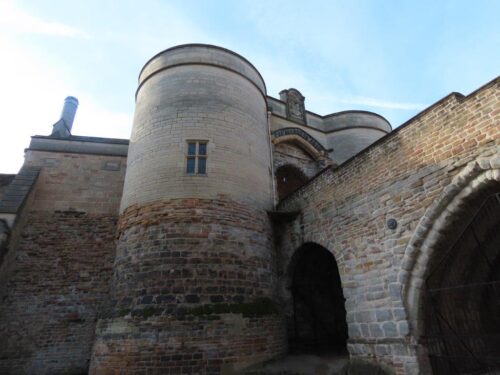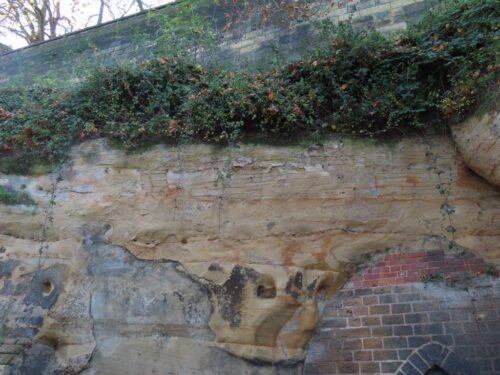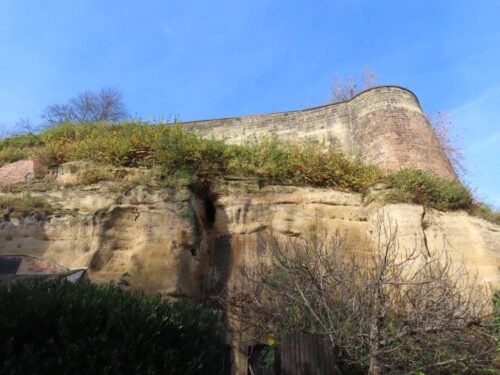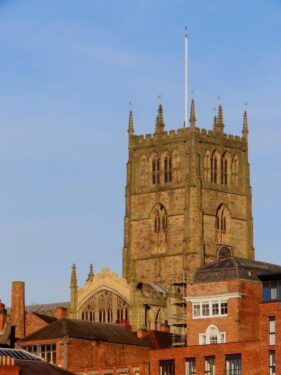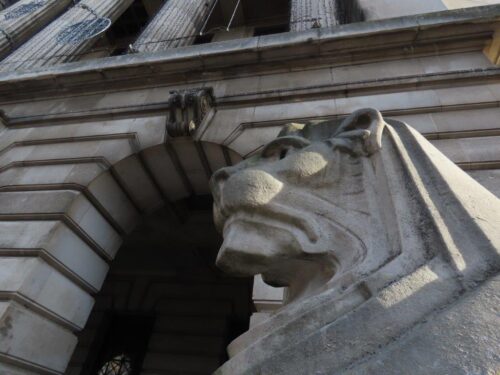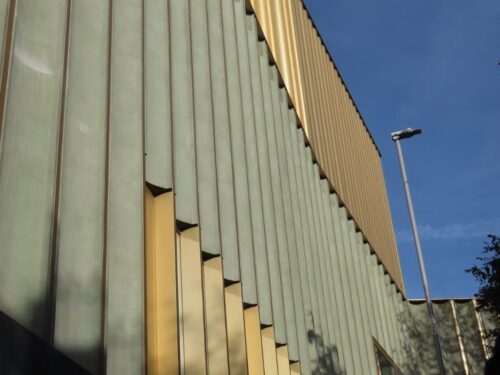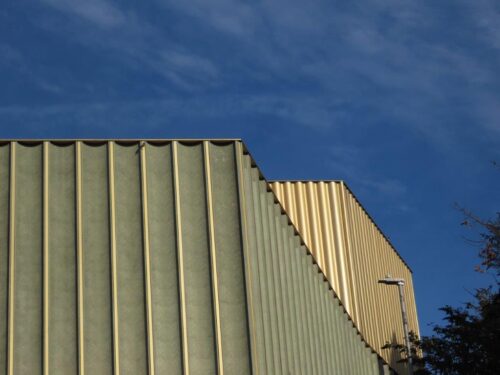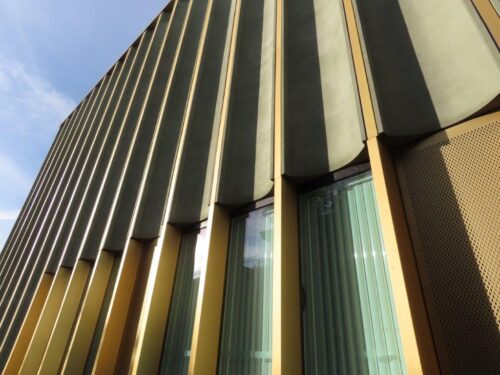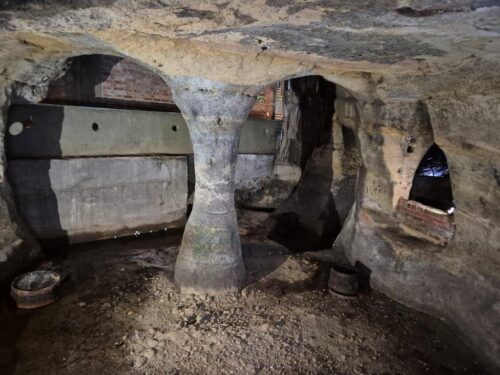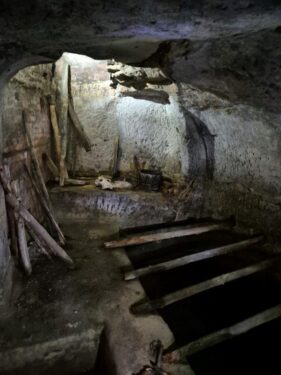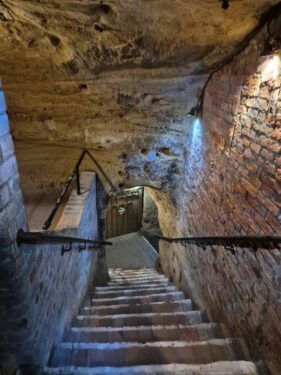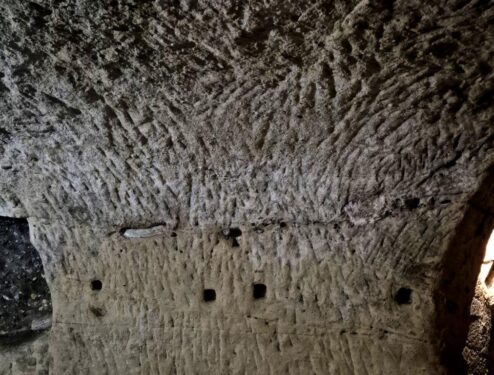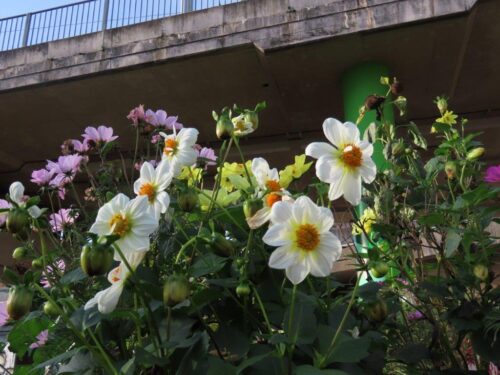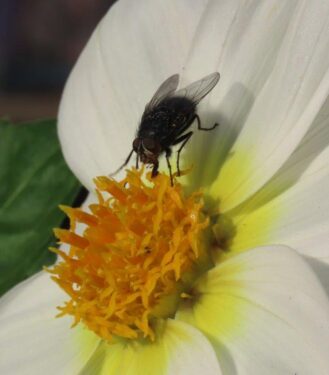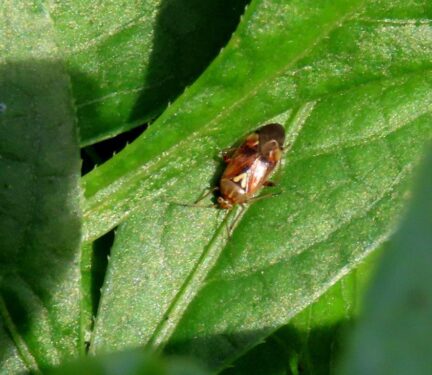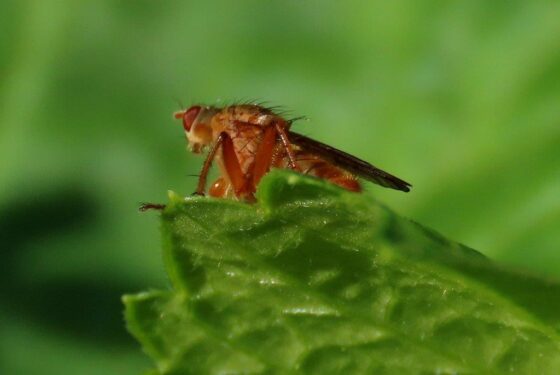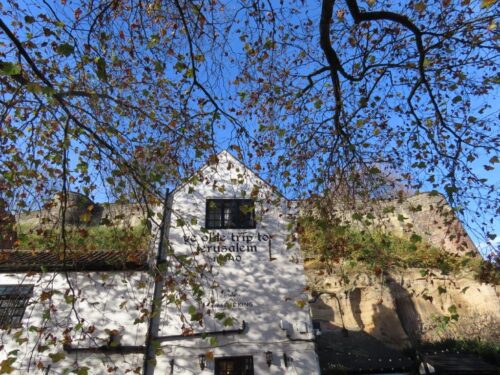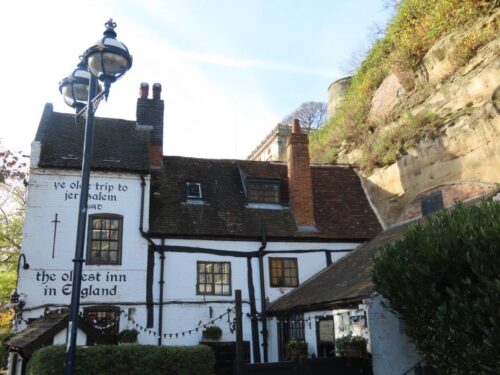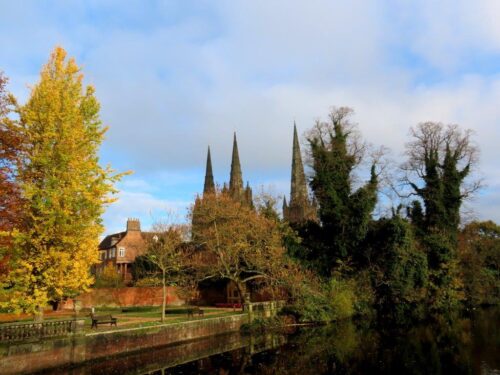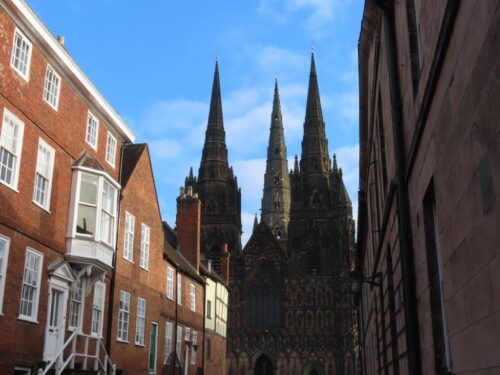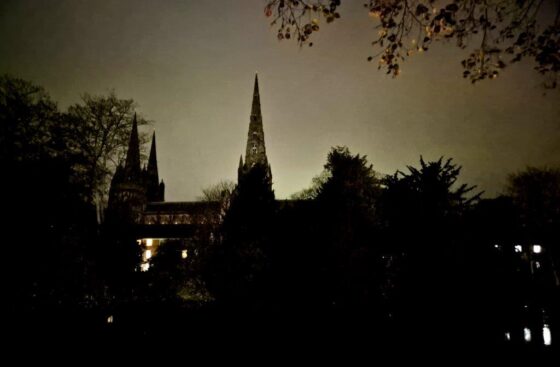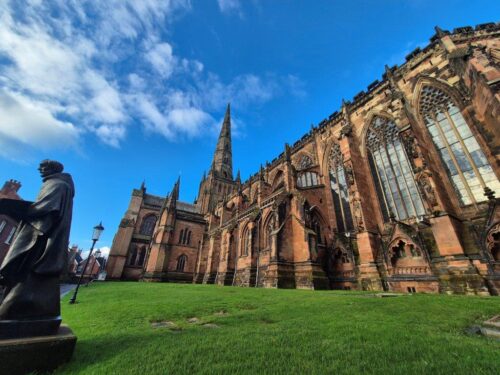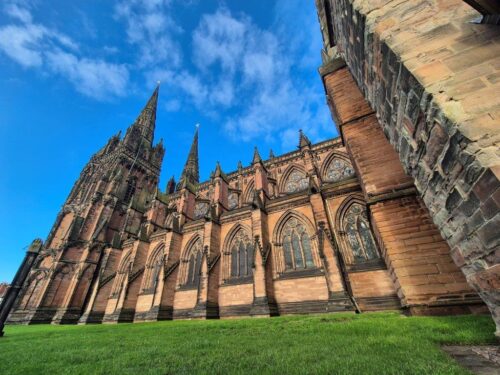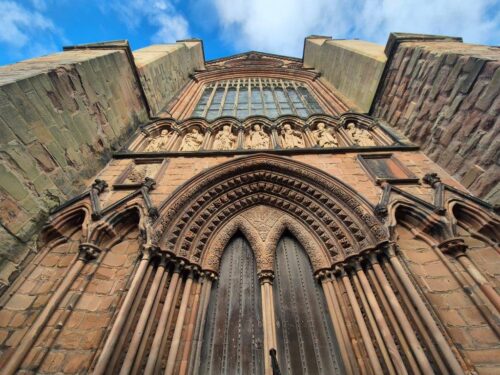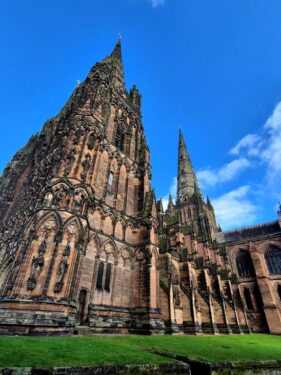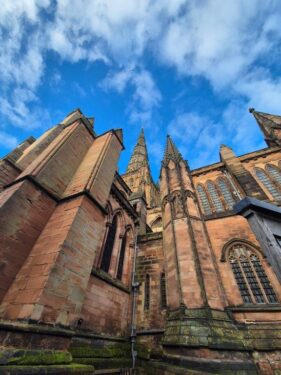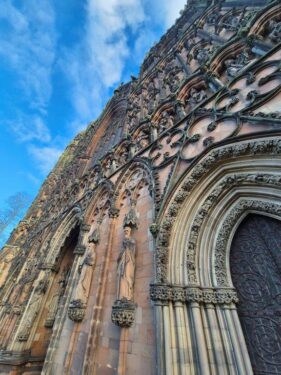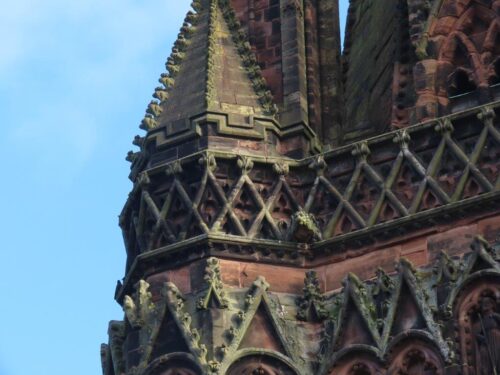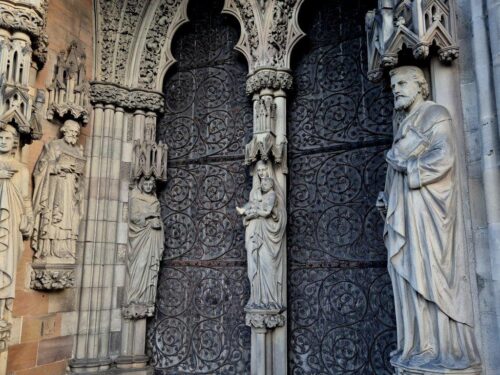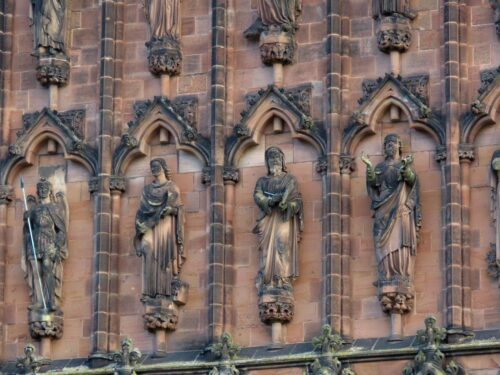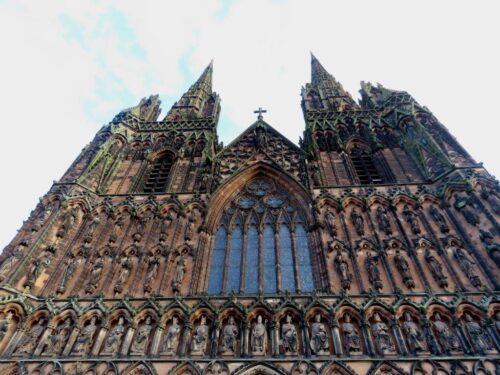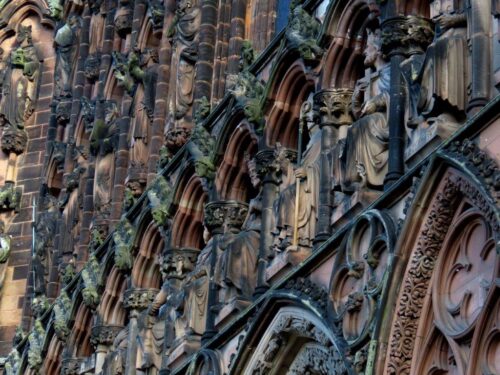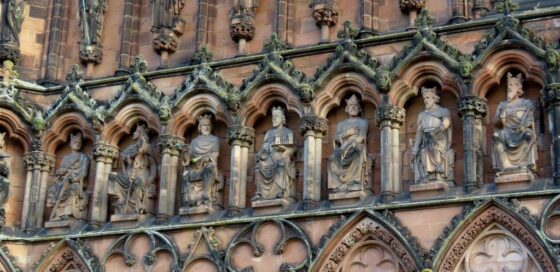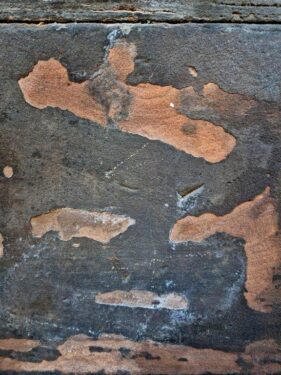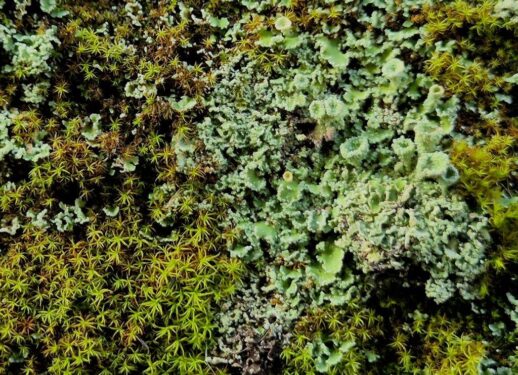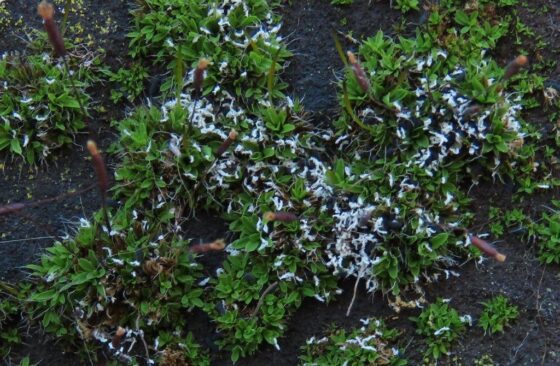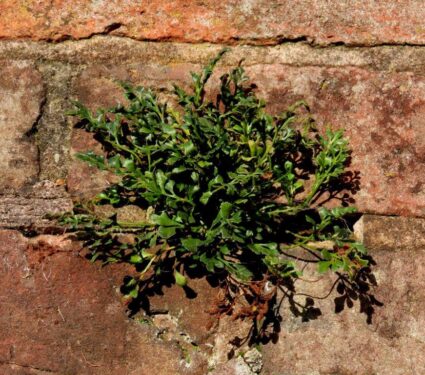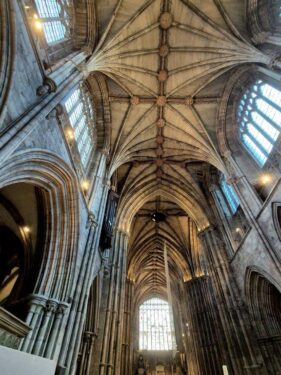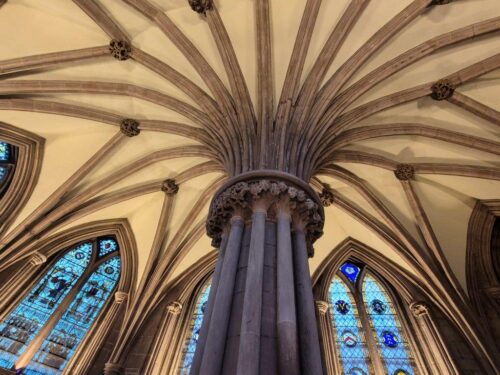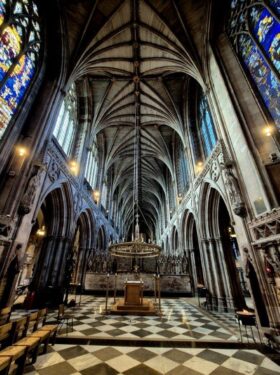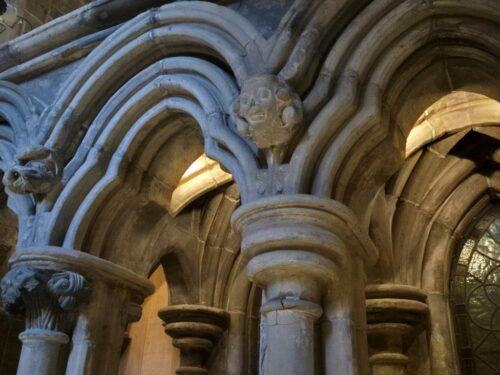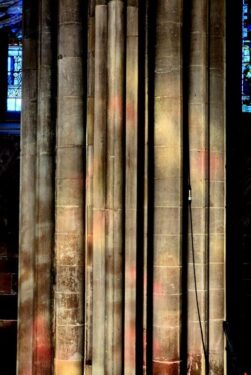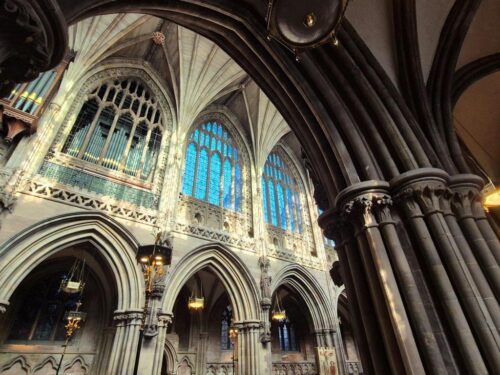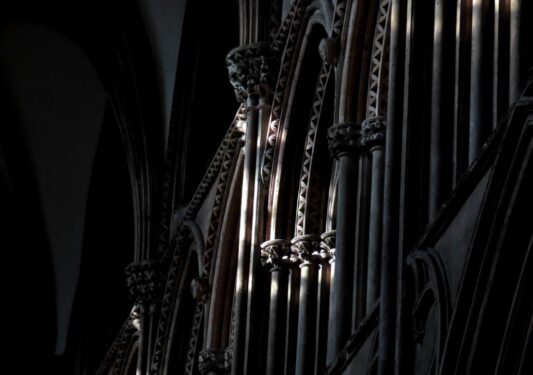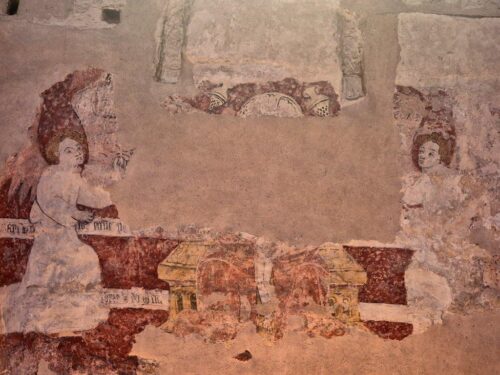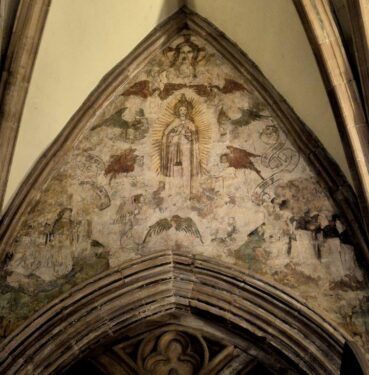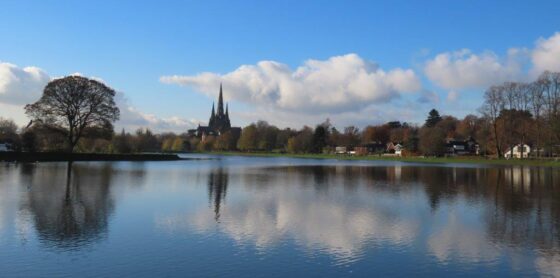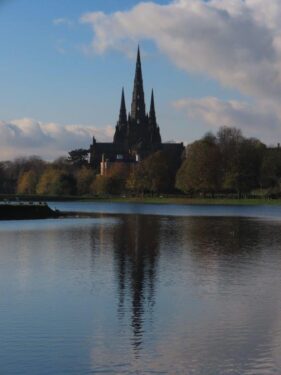Our monthly short breaks often have their genesis from a single place or sight or activity we want to experience, padded out into a two- or three-night stay with other things we think might be of interest in the vicinity, or at least easily accessible by public transport. November’s trip was no exception: for this, we need simply look back to the televised rail journeys of Michael Portillo. Love him or hate him as a politician, it cannot be denied that he opens the eyes of many to the abundant delight of rail.
A few months ago he alighted at East Midlands Parkway. A station in the middle of nowhere – except for that fact that the platform is almost within touching distance of the iconic cooling towers at Ratcliffe-on-Soar power station….
For this one we were hoping for fine sunny weather, and as we left St Pancras, it seemed we were in luck. But by the time we reached Nottinghamshire, the anticyclonic gloom of the past few weeks had closed in again. We shouldn’t have worried: against blue skies or grey, so close up those iconic megastructures cannot fail to inspire awe.
And yes for a few precious moments, the towers lit up as a few shafts of sunlight broke through …
To hear that these cathedrals to power generation are due to be demolished, we knew we just had to visit. And just in time perhaps, as the power station ceased generating at the end of September this year, the very last coal-burning power station still operating in this country.
Of course, it is wonderful to know that such power stations are no longer polluting our world. But do their most obvious manifestation, the cooling towers with their almost sensually curved shape, need to be wiped from the face of the Earth? Surely there is still space for these iconic buildings, if nothing else as a memorial, Lest We Forget the damage inflicted to our planet and its future over the past three or four generations, and the damage inflicted upon human communities by heartless political dogma without effective transitional help towards low-carbon economies.
Every step we took, we were overlooked by the eight brooding, tamed beauties, even down by the River Soar at Redhill Marina, just about the only place within walking distance to find an afternoon cuppa.
A few hundred metres short of its discharge into the Trent, the river here is canalized, with locks, towpaths and barges, the stiller waters rampantly colonized by invasive Floating Pennywort.
In common with seemingly everywhere this year, the valley grasslands abounded in fungi, including fresh cowpats with the orange discs of Cheilymenia stercorea.
There just past the lock was the red hill after which it is named, quite a surprise in the flat valley. And the rocks really are very red, a type of friable mudstone with numerous ramifying seams of fibrous gypsum, up to several centimetres thick.
It could be the gypsum that is imparting a calcareous influence to the soil, with seepages encrusted in tufa, and the slopes festooned in Old Man’s Beard.
Then, after a happy three hours in the middle of nowhere, it was back onto the train and onwards to Nottingham. What a revelation! As the light stated to fade we were back among canals and warehouses …
… including the welcome Canalhouse Bar, in a former canal museum and still with a narrowboat on show inside the bar.
The Premier Inn, also by the canal in the Island Quarter, was conveniently situated just along from Binks Yard restaurant, which provided us what has to be the very best meal of the many we have tasted on our monthly travels this year. For me it was free-range local pork chop with sautéed potatoes, seared hispi cabbage and a delicious honey mustard dressing, while Jude went for the rainbow salad with all sorts of magical ingredients, topped with fried halloumi strips. We finished off with the richest possible salted chocolate tart, with blood orange sorbet, though pleased we ordered just one with two spoons! And very reasonably priced even with a splendid bottle of Tempranillo… I don’t usually put such foody detail in these blogs, but that really was one of the best of the best, one to be savoured vicariously over years to come.
Next morning, the grey had given way to blue as we headed back along the canal, the sunlight showing the distinctive red bricks to advantage, and contributing to some lovely reflectascapes …
… which were rendered even more exotic by the extravagance of displaying Mandarins.
But there is another side to the city, perched on the red sandstone hills: castle, cathedral, churches, municipal and other monumental buildings looking down over the canal.
Then built into the cliff is the art gallery, Nottingham Contemporary, continuing a centuries-old practice of expanding the city underground into hundreds of caves hewn out of the soft rock.
Used for storage, shelter and industry, we visited the ‘City of Caves’. Perhaps the tours under the castle would have been better organised, albeit no doubt more expensive, but we were left a little disappointed, especially when the wifi signal dropped out and we were left without commentary half way through …
Still we got the drift, and emerged blinking into the bright sunlight into a pop-up garden, full of dahlias, and even in very unprepossessing concrete surroundings, teeming with insect life!
And all that was left to do was head to Ye Olde Trip to Jerusalem, built into the Castle mound, for a good lunch within the beating heart of the underground city.
Next stop further up the Trent valley was Lichfield. Again we had few preconceptions about the place, but very soon realised it is all about the Cathedral, the three spires from every angle looming large over the city and its other historic attractions.
It soon got dark, and even though it wasn’t illuminated, the cathedral made its presence felt, like something from the brushes of Atkinson Grimshaw, the master of nocturnal painting,
Overnight rain came as a bit of a surprise, but by breakfast the sun was out and the skies cobalt blue. First stop of course was the cathedral: up close its many statues, figurines and external decoration lend it an intricate Gothic scariness, the sort of thing we have felt previously in cathedrals such as Cologne.
And no doubt it was not so long ago even more forbidding, before most of the stones were cleaned of the grime of the centuries to reveal the natural red sandstone, which now with lower aerial pollution levels is allowing colonization by mosses, lichens and ferns.
And so inside. The space feels vast, and it comes with all the requisite pillars, ornamentation, stained glass and wall paintings, but both of us felt it lacked a certain indefinable something. We couldn’t fault the warmth of the welcome, but the fabric of the building simply didn’t have it for us.
Out again into the sun, time to stroll around Stowe Pool for lovely reflections, visit Dr Johnson’s house, walk past Erasmus Darwin’s house, and settle down in the Angel pub for a fine local ale. And before we knew it, back to the station and home. But only three weeks until our next trip!

